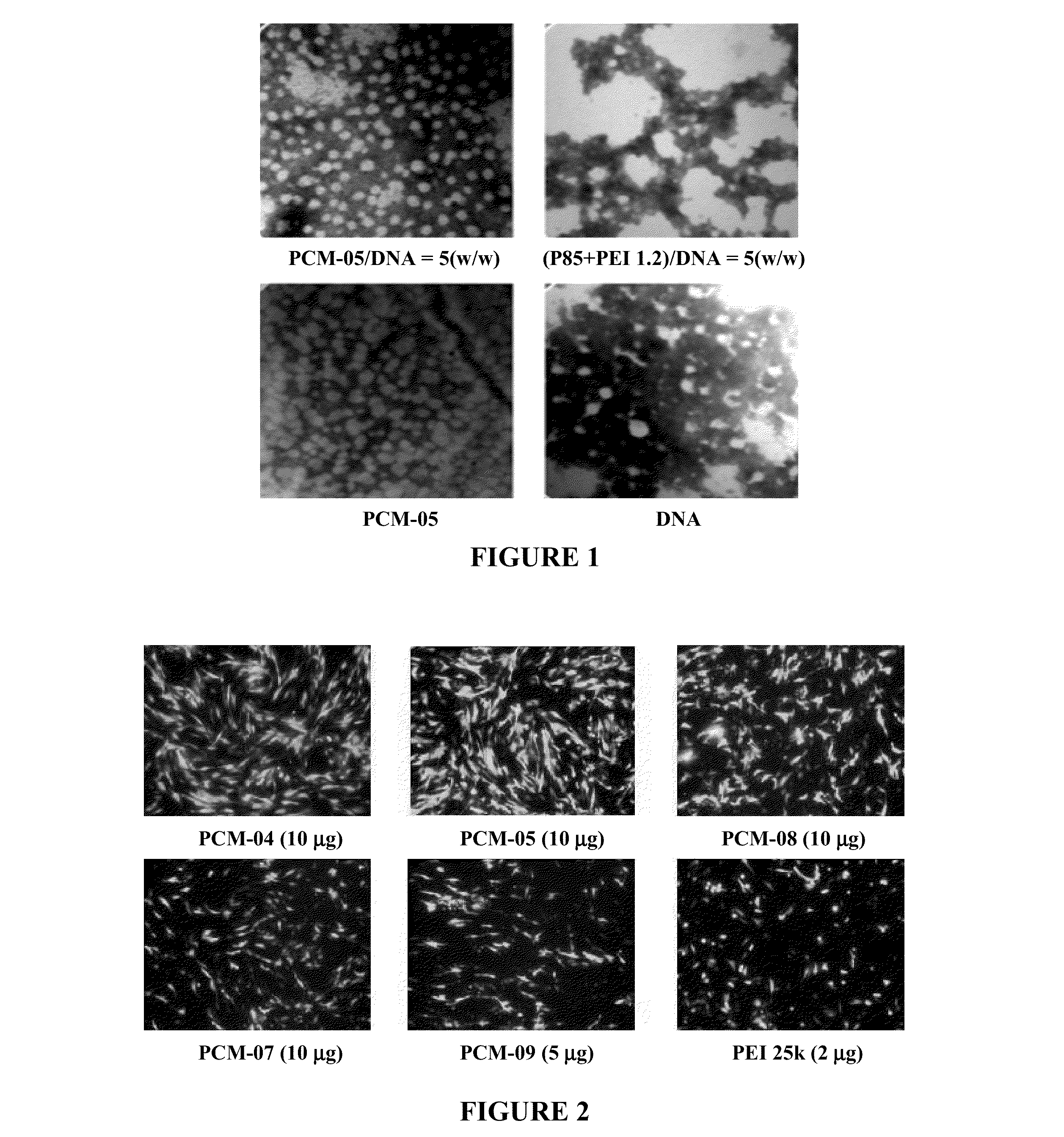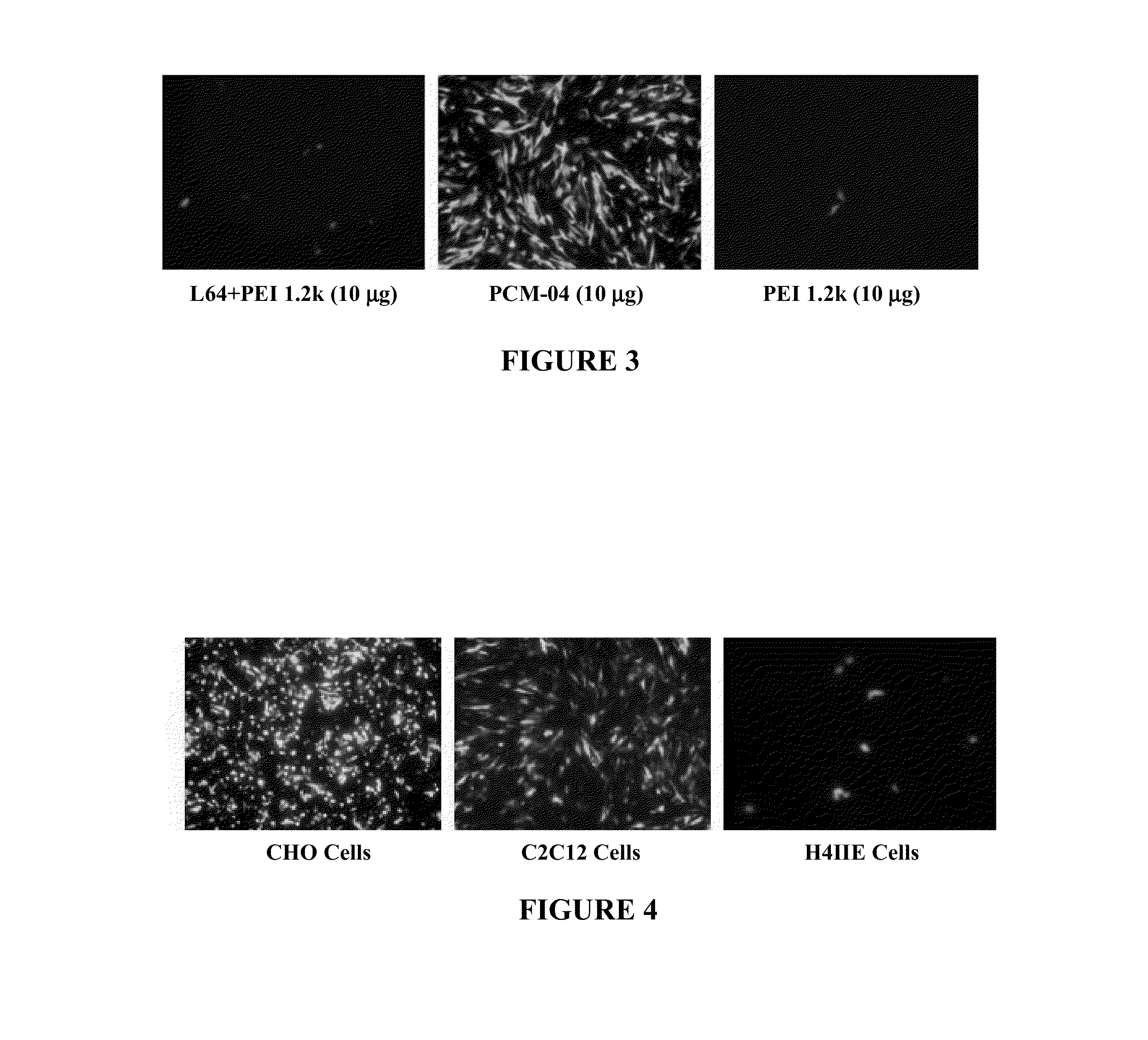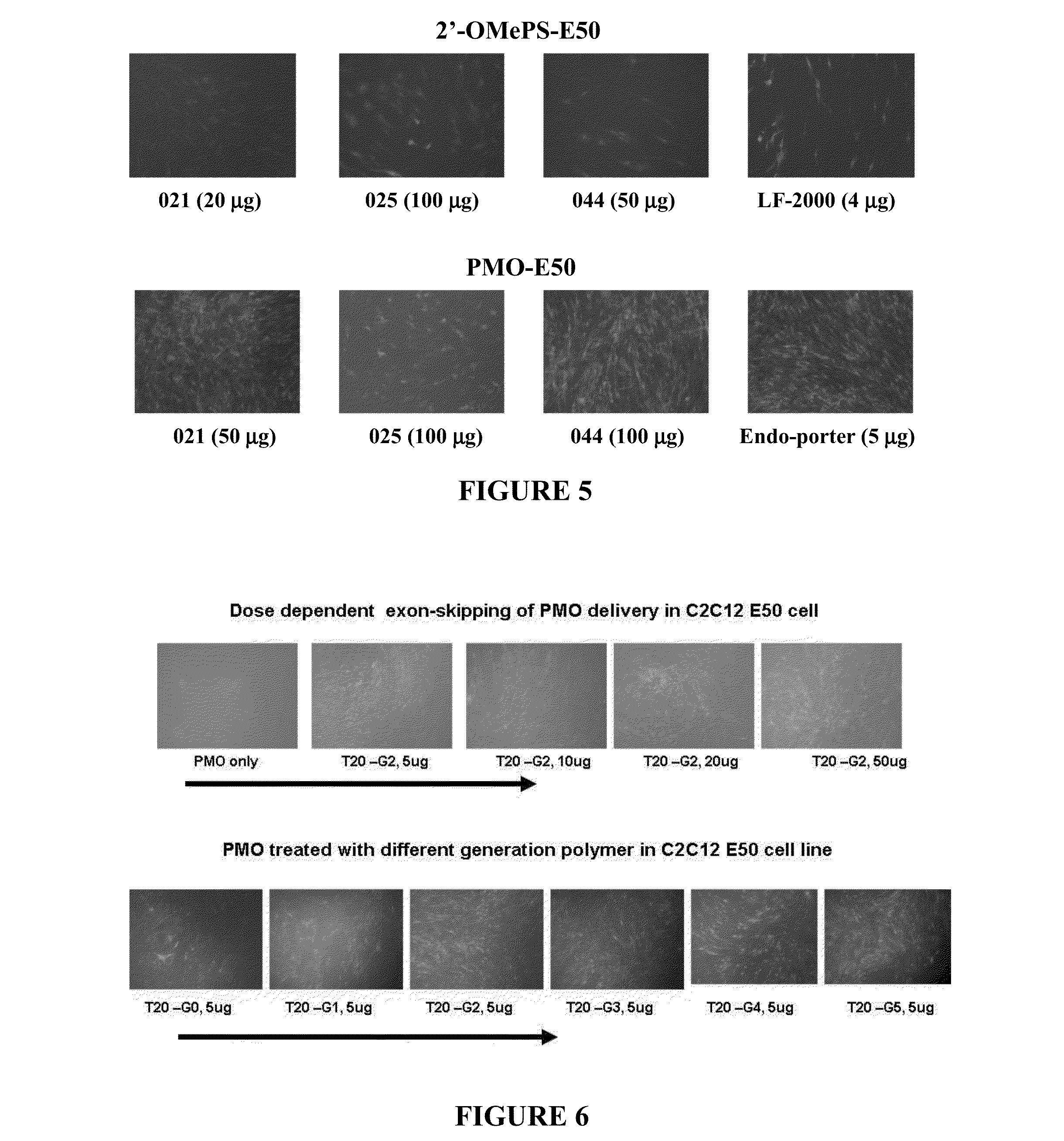Amphiphilic Cationic Polymers and Methods of Use Thereof
- Summary
- Abstract
- Description
- Claims
- Application Information
AI Technical Summary
Benefits of technology
Problems solved by technology
Method used
Image
Examples
example 1
Synthesis of Exemplary Polycarbamate (PCM) Amphiphilic Cationic Polymers
[0083]Pluronic®-PEI polymers were synthesized according to the methods of Cho et al., Macromolecular Research, 14:348-353 (2006). Briefly, Pluronics were dried overnight in vacuo at 40° C. prior to modification, then activated with an excess of 1,1′-carbonyldiimidazole (CDI) in 10 ml of anhydrous acetonitrile. After stirring for 3 hours at room temperature, the reaction mixture was treated with 0.5 ml water for 20 minutes to neutralize the nonreacted CDI. An excess of PEI in 20 ml of ethanol was then mixed with the activated Pluronics and the mixture was stirred overnight. Next, the mixture was diluted with water and dialyzed against 20% aqueous ethanol for 24 hrs using a membrane tube (2000 Da molecular weight cutoff) to remove small molecular mass reagents, including PEI. The conjugates were further separated using cation exchange chromatography for the separation of unconjugated Pluronic from the conjugated f...
example 2
Synthesis of Exemplary Dendron-Capped and Arginine-Capped Amphiphiles
[0086]For the synthesis of dendron-capped Pluronic® P85 amphiphilic polymers, Pluronic® P85 was activated with 1,1′-carbonyldiimidizole (CDI) and then mixed with an excess of ethylenediamine in 20% ethanol. After stirring overnight, the reaction mixture was diluted with distilled water and dialyzed for 24 hours against 20% ethanol using membrane tubes having a molecular weight cut-off of 2000 Da. The product was then lyophilized to obtain the intermediate NH2-P85-NH2 (P85-G0). The 1H NMR (D2O) spectrum for the P85-G0 was: δ PPO [—OCH2CHCH3)—, m] 1.14; δ PPO+PEO [—OCH2CH(CH3)—, —CH2CH2O—, m] 3.40-3.65; δ [—OCONHCH2CH2NH2, m] 2.75-2.90.
[0087]Synthesis of P85-G0.5.
[0088]Next, P85-G0 was dissolved in methanol and added drop-wise to 100 equivalents of methyl acrylate maintained at room temperature. After 48 hours, methanol and unreacted methyl acrylate were removed under vacuum. The residue was precipitated with an exce...
example 3
Analysis of Amphiphilic Cationic Polymers Complexed with Nucleic Acids
[0093]Polymer / DNA complexes were prepared fresh immediately before use by gently vortexing a mixture of DNA and a polymer solution at various polymer / DNA weight ratios. The complexes were incubated at room temperature for 30 minutes in a 24 microliter volume and loading dye was then added. Samples were loaded onto a 1% agarose gel with ethidium bromide (0.1 μg / ml) in tris-acetate (TAE) buffer (100V, 40 min), and the gel was analyzed on a UV illuminator.
[0094]Zeta Potential measurements of polymer / DNA complexes were performed at 25° C. using Zetaplu Zeta Potential Analyzer (Brookhaven Instrument Co.) equipped with a 15 mV solid-state laser operated at a wavelength of 635 nm. Effective hydrodynamic diameter was measured by photon correlation spectroscopy using the same instrument equipped with Multi Angle option. The size measurements were performed at 25° C. at the angle of 90°. Polymer / DNA complexes were prepared ...
PUM
| Property | Measurement | Unit |
|---|---|---|
| Mass | aaaaa | aaaaa |
| Mass | aaaaa | aaaaa |
| Diameter | aaaaa | aaaaa |
Abstract
Description
Claims
Application Information
 Login to View More
Login to View More - Generate Ideas
- Intellectual Property
- Life Sciences
- Materials
- Tech Scout
- Unparalleled Data Quality
- Higher Quality Content
- 60% Fewer Hallucinations
Browse by: Latest US Patents, China's latest patents, Technical Efficacy Thesaurus, Application Domain, Technology Topic, Popular Technical Reports.
© 2025 PatSnap. All rights reserved.Legal|Privacy policy|Modern Slavery Act Transparency Statement|Sitemap|About US| Contact US: help@patsnap.com



